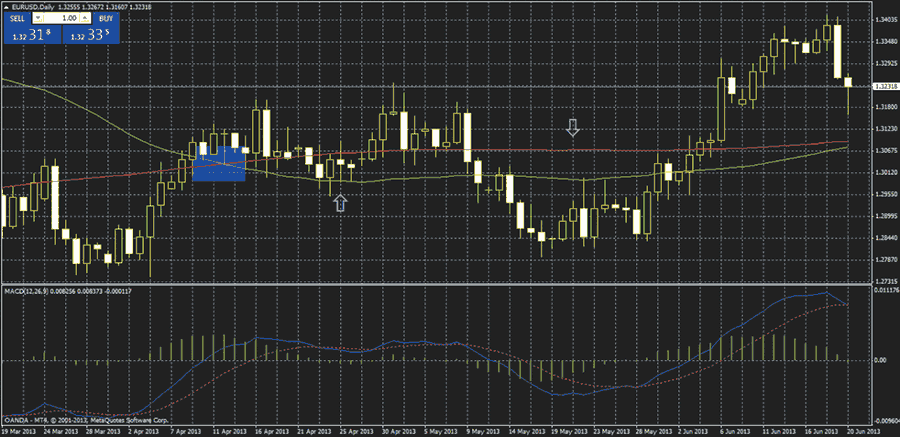INDICATORS
Back To The Basics
Muscle Up Those Averages
by Ajay Pankhania
Trading the currency markets means you need to be well aware of global macro and micro economic variables. But when it comes to trading these markets, simple is better. Find out more through this example of the EUR/USD currency pair.
Moving averages, although simple, are sometimes underused. In extreme market movements, moving averages have a smoothing effect. They are also vital and fundamental to the foundations of indicators we know today, one of them being the moving average convergence/divergence (MACD).
BULL OR BEAR?
There are many types of moving averages. Two of the more popular ones are the simple moving average (SMA) and exponential moving average (EMA). SMAs are calculated by adding the price of the financial asset and dividing it by the number of observations (See sidebar “Calculating Moving Averages” on page 30). In other words, you can calculate a simple moving average as you would normally calculate an average. EMAs are a bit more complex and require more computation. Nevertheless, you can use both these moving averages to see who has more muscle in a trend — the bear or the bull. Both moving averages provide a floor (support) or a roof (resistance) to a financial asset.
ARE THEY CONVERGING OR DIVERGING?
The MACD is a popular indicator; it is the difference between two EMAs. If you take an average of a smaller amount of data, your average will be greater. In this case, it would apply to a faster moving average (50-day) and the opposite would happen for a larger set of data (slower moving average, that is, 200-day). It would be the difference between these two averages (see sidebar “Calculating MACD” on page 30). The signal line is the average for the graph; usually a nine-day average is used. You can use the MACD to see whether momentum is picking up or declining — if the MACD has rising lows, then momentum is picking up, and if it has lower highs, it shows that the security is losing momentum.

FIGURE 1: APPLYING MOVING AVERAGES ON THE EUR/USD. Here you see how the simple moving average (SMA), exponential moving average (EMA), and the moving average convergence/divergence (MACD) helped indicate price movement in the EUR/USD. If you look at economic data, you will see how fundamental data impacts price movement in this currency pair.
Excerpted from an article originally published in the September
2013 issue of Technical Analysis of Stocks & Commodities magazine. All rights reserved. © Copyright 2013, Technical Analysis, Inc.
Return to Contents
